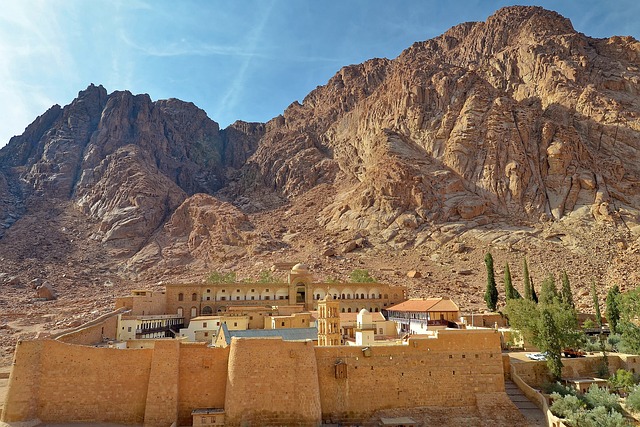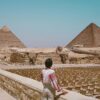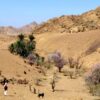Introduction:
Imagine standing at the crossroads of ancient trade routes, where the whispers of bygone eras echo through the arid winds. The Sinai Peninsula, a land that has seen the footsteps of prophets, kings, and nomads, invites you to explore its timeless beauty and rich history. Picture the awe of ancient travelers, their faces lit by the glow of desert sunsets, marveling at the same rugged landscapes that captivate us today. This is Sinai – a place where history and nature blend seamlessly, offering an epic adventure for history enthusiasts and curious travelers alike.
In this journey through the heart of the Sinai Peninsula, we’ll uncover the stories of three monumental sites that have shaped the course of history: St. Catherine’s Monastery, Mount Sinai, and Serabit el-Khadim. Each location holds its own unique tale, etched in the sands of time, waiting to be discovered.

Significance of Sinai Historical Sites:
The Sinai Peninsula has long been a pivotal region, serving as a bridge between Africa and Asia. Its strategic location made it a vital corridor for ancient trade routes, facilitating the exchange of goods, cultures, and ideas. This desert expanse, often perceived as barren and harsh, was a bustling hub of activity, drawing traders, explorers, and conquerors.
In biblical history, Sinai stands as a landmark of profound religious significance. It is believed to be the land where Moses received the Ten Commandments, a momentous event that has reverberated through the annals of time. The peninsula has also been touched by the hands of numerous civilizations, each leaving an indelible mark. From the ancient Egyptians, who mined its turquoise, to the Nabateans and Romans, who traversed its sands, Sinai’s historical tapestry is rich and varied.
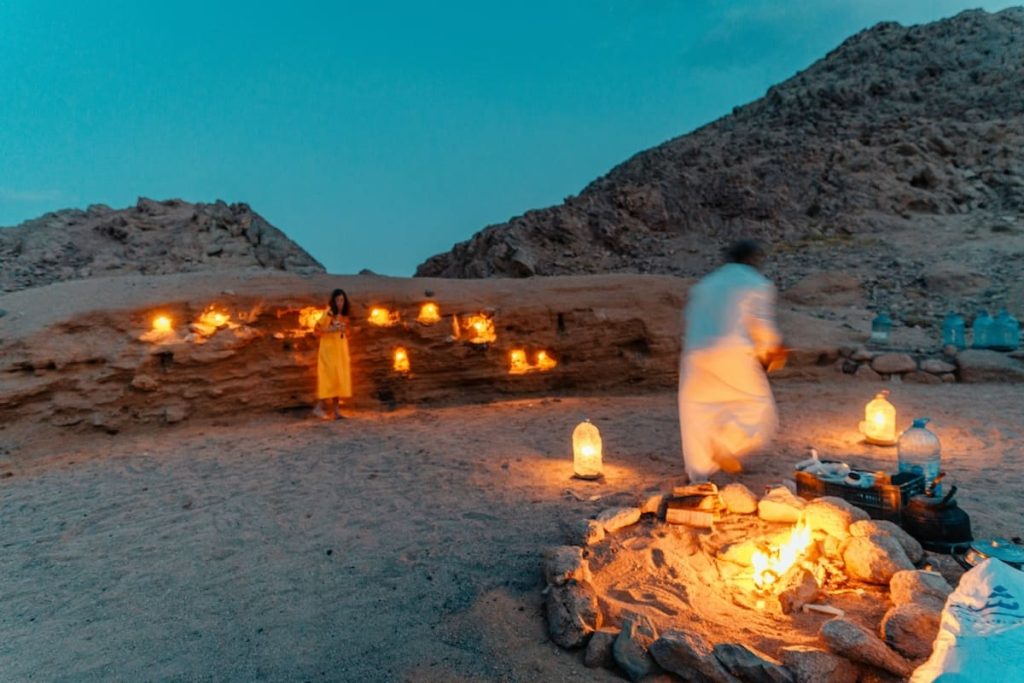
Sinai Historical Sites:
St. Catherine’s Monastery:
Nestled at the foot of Mount Sinai, St. Catherine’s Monastery is not just a religious site; it’s a living testament to the endurance of faith through centuries. This ancient monastery, founded in the 6th century by Emperor Justinian, is the oldest working Christian monastery in the world.
The monastery’s historical and religious significance is profound. It houses an extensive collection of early Christian manuscripts and icons, second only to the Vatican’s. The site itself is a marvel of ancient architecture, with its high walls and serene courtyards providing a sanctuary for monks and pilgrims alike.
Walking through the monastery, one can almost feel the presence of the countless souls who have sought solace within its walls. The library, brimming with ancient texts, speaks of the monastery’s role as a center of learning and preservation of Christian heritage. The burning bush, believed to be a direct descendant of the biblical one, stands as a symbol of divine presence and eternal faith.
Exploring St. Catherine’s Monastery is like stepping into a different era, where every stone has a story, and every corner holds a piece of history. For those with a keen interest in religious history, it is an unparalleled experience that connects the past with the present in a deeply spiritual way.
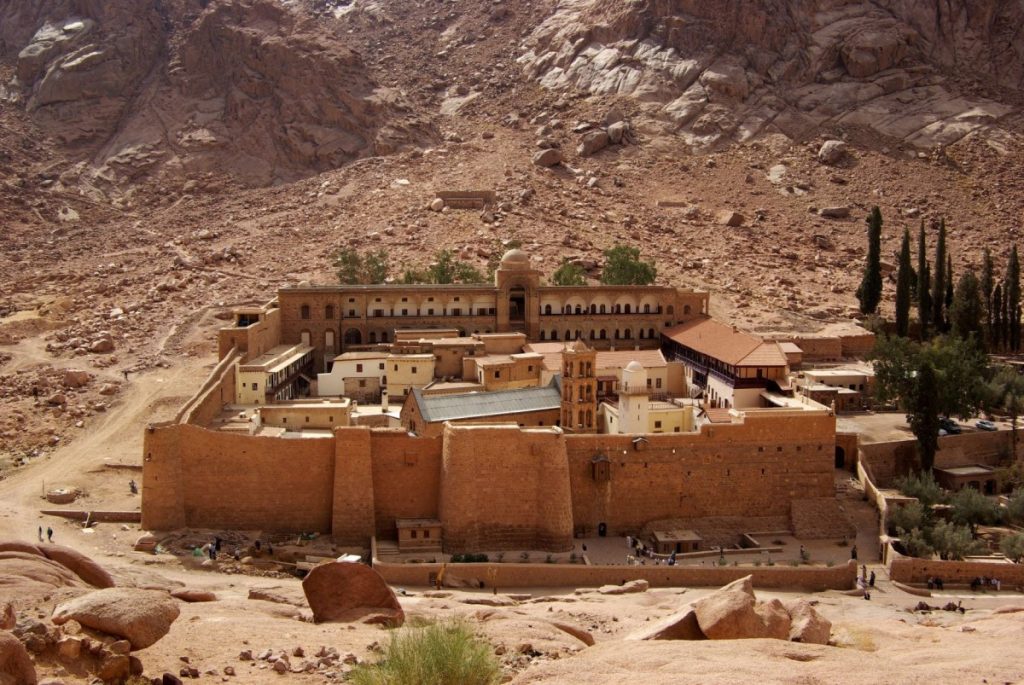
Mount Sinai:
Ascending Mount Sinai, one cannot help but feel a sense of awe and reverence. This rugged peak, known biblically as the mountain where Moses received the Ten Commandments, stands as a sacred beacon in the Sinai Peninsula. The trek to its summit is not just a physical journey but a spiritual pilgrimage that has drawn countless seekers of faith and adventure throughout the ages.
Historical and Religious Context: Mount Sinai’s significance is rooted deeply in religious tradition. According to biblical accounts, it was on this very mountain that Moses encountered the divine presence and received the commandments that would guide the moral compass of entire civilizations. This event, recorded in the Book of Exodus, has made Mount Sinai a pivotal site for Judaism, Christianity, and Islam.

The Trek to the Summit: Embarking on the climb to Mount Sinai’s summit is an experience filled with anticipation and reflection. The path, known as Siket Sayidna Musa or the Path of Moses, winds through rocky terrain, punctuated by awe-inspiring vistas and moments of serene beauty. For many, the journey begins in the early hours of the morning, under a blanket of stars, with the goal of reaching the summit by sunrise.
As dawn breaks, the view from the top is nothing short of breathtaking. The golden rays of the sun illuminate the surrounding peaks and valleys, creating a panorama that feels almost otherworldly. It’s a moment that captures the essence of Sinai – a convergence of natural splendor and profound spirituality. For those standing at the summit, the stories of Moses and the ancient prophets become more than mere tales; they are experiences etched into the very landscape.
Practical Tips for the Trek:
- Preparation: Wear sturdy, comfortable footwear and bring plenty of water. The climb, though not technically difficult, can be strenuous.
- Timing: The best time to start the trek is around 2 AM, allowing you to reach the summit in time for sunrise.
- Guides: Hiring a local Bedouin guide can enhance your experience, providing valuable insights and ensuring your safety.

Serabit el-Khadim:
Hidden amidst the craggy hills of the Sinai Peninsula lies Serabit el-Khadim, an archaeological gem that tells tales of ancient Egyptian enterprise and devotion. This site, once a bustling center for turquoise mining, offers a fascinating glimpse into the industrious spirit of ancient civilizations.
Historical Background and Importance: Serabit el-Khadim was an important mining site during the Middle Kingdom of Egypt, around 2000 BCE. The Egyptians prized turquoise, considering it a symbol of fertility and protection. The mines of Serabit el-Khadim were extensively exploited to satisfy the demand for this precious stone, which adorned the jewelry and amulets of pharaohs and nobles.
Temple of Hathor: At the heart of Serabit el-Khadim lies the Temple of Hathor, the goddess of love, music, and mining. This temple, perched on a high plateau, served as a place of worship for miners seeking Hathor’s favor and protection. The temple’s ruins, though weathered by time, still exude an aura of sacredness. The carved stelae and reliefs depict pharaohs making offerings to Hathor, providing valuable insights into the religious practices of the period.
Exploring Serabit el-Khadim: Visiting Serabit el-Khadim is an adventure in itself. The journey to the site involves a trek through rugged terrain, much like the ancient miners would have undertaken. The remnants of the turquoise mines, scattered with tools and inscriptions, offer a tangible connection to the past. The panoramic views from the temple site are stunning, providing a dramatic backdrop to the stories of labor and devotion that unfolded here.
Practical Tips for Visiting:
- Accessibility: The site is remote and requires a fair amount of hiking. It is advisable to go with a guide familiar with the terrain.
- Timing: The cooler months, from October to April, are the best times to visit, as the summer heat can be intense.
- Equipment: Bring sturdy shoes, ample water, and sun protection for the hike.
Practical Visiting Tips:
Visiting the historical sites of the Sinai Peninsula can be a transformative experience, blending adventure with profound historical insight. To make the most of your journey, consider these practical tips:
Best Times of Year to Visit: The Sinai Peninsula’s climate can be extreme, with scorching summers and chilly winters. The best times to visit are during the cooler months, from October to April. During these months, the weather is more temperate, making outdoor activities and explorations more comfortable.
Recommended Travel Routes and Modes of Transportation: Reaching the Sinai Peninsula typically involves traveling through Egypt’s major cities such as Cairo or Sharm El Sheikh. From there, you can access the peninsula by road or by domestic flights.
- By Road: Renting a car or taking a bus from Cairo or Sharm El Sheikh can be a scenic way to travel, offering the chance to see more of Egypt’s diverse landscapes.
- By Air: For quicker access, flights to Sharm El Sheikh or Taba followed by local transportation can be more convenient.
Safety and Security Considerations: While the Sinai Peninsula is generally safe for tourists, it’s essential to stay informed about current travel advisories and local conditions. Here are some safety tips:
- Stay Updated: Check travel advisories from your home country and follow local news for any updates on safety conditions.
- Travel with a Guide: Hiring a local guide can enhance your experience and ensure your safety, especially when exploring remote areas.
- Respect Local Customs: Be mindful of cultural norms and traditions. Dress modestly, especially when visiting religious sites, and always ask for permission before taking photographs of people.
General Tips for Visiting Historical Sites:
- Preparation: Wear comfortable, breathable clothing suitable for hiking and walking. Sturdy shoes are a must for navigating uneven terrain.
- Hydration: Carry plenty of water, especially when visiting remote sites where facilities might be limited.
- Health Precautions: Protect yourself from the sun with hats, sunglasses, and sunscreen. Also, consider bringing a small first-aid kit for minor injuries or ailments.
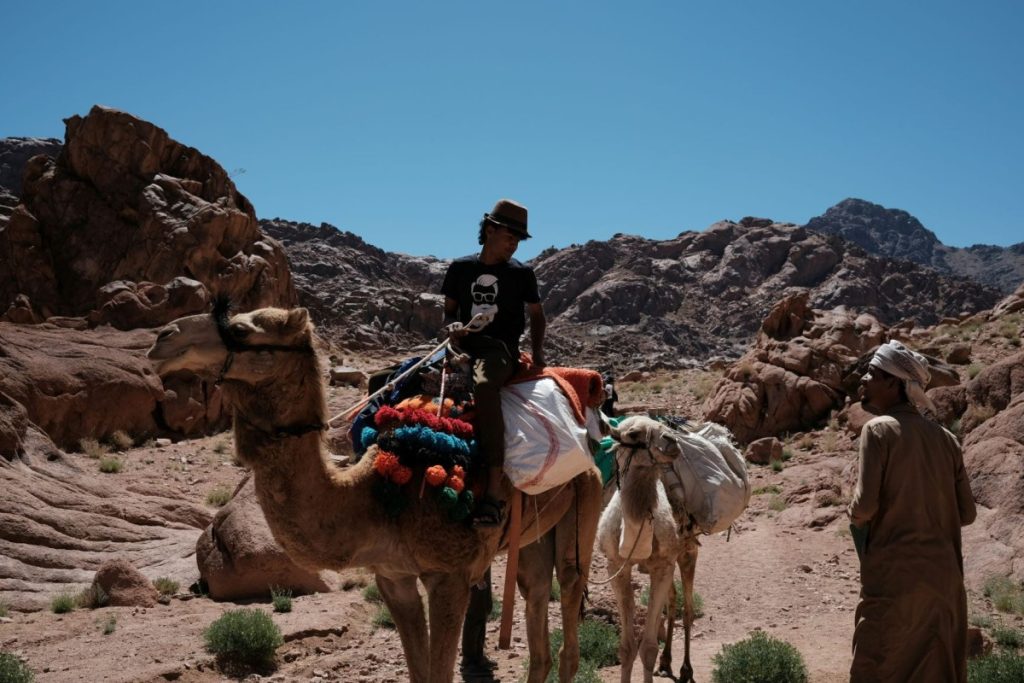
Specific Tips for Key Sites:
- St. Catherine’s Monastery:
- Arrival: The monastery opens early in the morning. Arriving early helps you avoid the crowds and enjoy a more peaceful visit.
- Dress Code: Modest dress is required. Ensure your shoulders and knees are covered as a sign of respect.
- Mount Sinai:
- Night Climb: The most popular time to start the trek is around 2 AM to reach the summit for sunrise. Be sure to bring a flashlight or headlamp for the climb.
- Layered Clothing: Temperatures can be quite cold at the summit, even in warmer months, so dressing in layers is advisable.
- Serabit el-Khadim:
- Guided Tours: Due to its remote location, it is highly recommended to visit with an experienced guide who can navigate the terrain and provide historical context.
- Equipment: Bring a camera to capture the stunning vistas and ancient inscriptions, but be respectful of the site’s historical significance.

Conclusion:
The Sinai Peninsula offers a unique blend of history, spirituality, and natural beauty. From the sacred grounds of Mount Sinai and the ancient walls of St. Catherine’s Monastery to the enigmatic ruins of Serabit el-Khadim, each site invites you to step back in time and experience the stories of past civilizations. As you explore these historic treasures, you’ll gain a deeper understanding of the region’s significance and the enduring legacy of its ancient inhabitants. So pack your bags, lace up your hiking boots, and embark on a journey through the sands of time in the magical Sinai Peninsula.
Frequently Asked Questions About Exploring Sinai Historical Sites
Why is the Sinai Peninsula historically significant?
What are the most important historical sites in Sinai?
Can visitors explore inside St. Catherine’s Monastery?
What is the significance of Mount Sinai?
How difficult is the trek to Mount Sinai’s summit?
What is the best time to climb Mount Sinai?
What should I bring for the Mount Sinai trek?
What is Serabit el-Khadim, and why is it important?
How do you get to Serabit el-Khadim?
When is the best time to visit Sinai’s historical sites?
How can I reach the Sinai Peninsula?
Is it safe to visit Sinai’s historical sites?
Do I need a guide to visit these sites?
What should I wear when visiting religious sites in Sinai?
What cultural etiquette should I follow when visiting Sinai?

Faris is the passionate founder of Travel2Egypt, deeply connected to Aswan’s essence. He aims to share the true heart of Egypt through its rich history, vibrant culture, and the warmth of its people. Join Faris to experience the magic of Aswan beyond the usual tourist paths.

